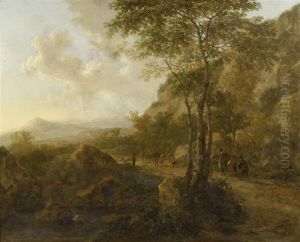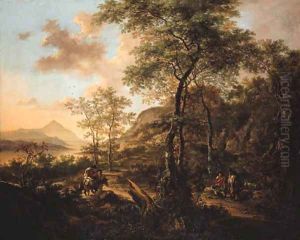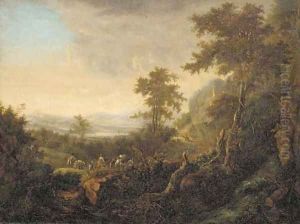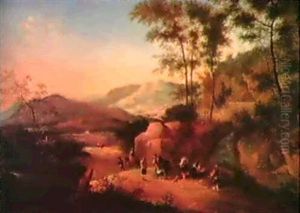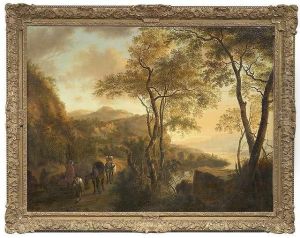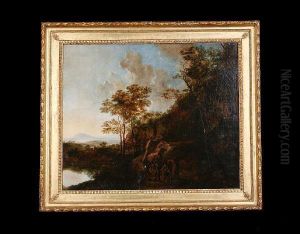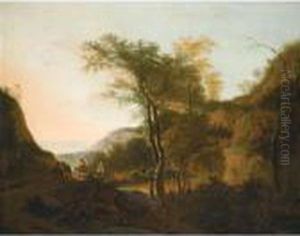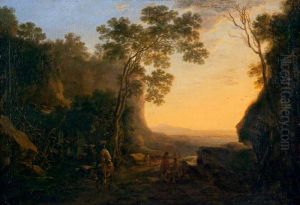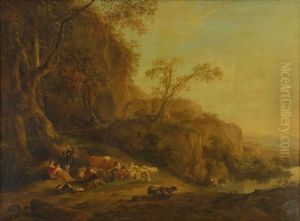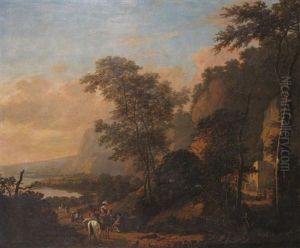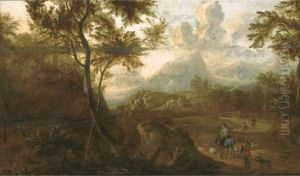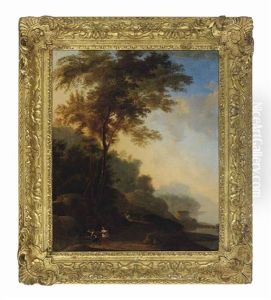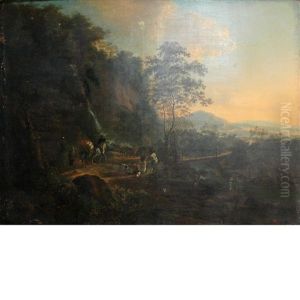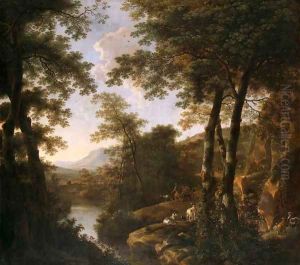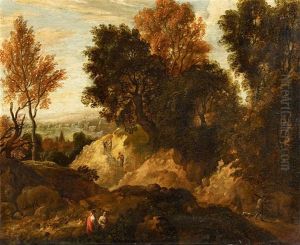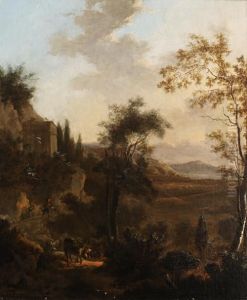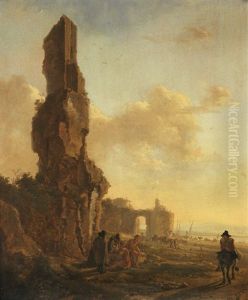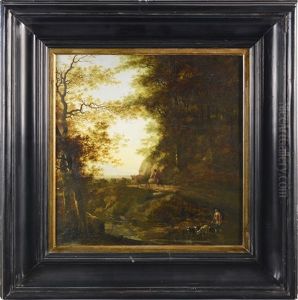Jan Both Paintings
Jan Both was a Dutch painter, born in Utrecht, the Netherlands, in 1618. He was one of the leading figures of Dutch Italianate landscape painters during the 17th century. Both initially trained under his father, Dirck Both, who was a glass painter, and later he probably worked with his brother Andries Both, who was also a painter. Jan Both's style was significantly influenced by his time in Italy, particularly in Rome, where he stayed from about 1638 to 1641.
In Italy, Both was deeply inspired by the work of Claude Lorrain, a French painter who was known for his classical landscapes and idealized Italian countryside scenes. Both adopted many elements from Lorrain's style, including the warm, golden light and the use of classical ruins as motifs in his paintings. His landscapes were characterized by a harmonious balance between the natural scenery and the human figures that often populated them.
After returning to Utrecht, Jan Both continued to produce works that reflected his Italian experiences. His paintings typically depicted scenes of the Roman Campagna and often included travelers on horseback or peasants in rural settings, basking in the glow of the late afternoon sun. Both's ability to capture the effects of light and atmosphere made his works highly sought after in his lifetime and they had a considerable influence on the development of Dutch landscape painting.
Jan Both's career was relatively short, as he died at the young age of approximately 34, in 1652, in Utrecht. Despite his early death, his work left a lasting legacy in the Dutch Golden Age of painting, and his landscapes continued to be appreciated and studied by artists and collectors long after his passing. His works can be found in many prestigious art collections across the world.
